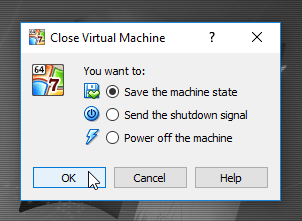

With a USB stick, it will run fast enough to give you a good notion of what working with Mint is like. If you're running it off a DVD drive, Mint will run slowly, but it will run quickly enough to give you an idea of what it's like to use Mint. Use this opportunity to play with Mint to see if you like it. You're just getting a chance to see what running Mint is like. So far, you've not installed anything on your PC. If you decide to install Mint, you can permanently fix the problem with the following steps:Ĭhoose the NVIDIA drivers and wait for them to be installed Mint will run slower this way, but it will boot and run. On older PCs using BIOS, press 'tab' instead of 'e.' Then, replace "quiet splash" with "nomodeset" and press F10 to boot. You set this to the Start Linux Mint option and press 'e' to modify the boot options. If Linux Mint freezes during boot, use the "nomodeset" boot option. Some Nvidia graphics cards don't work well with Mint's open-source driver. From here on out, you'll be running Linux Mint. For our purposes, you want to select "Start Linux Mint" from the first menu. You should see a menu giving you several choices. That done, insert your DVD or USB stick and reboot. Once you get to the BIOS or UEFI, look for a menu choice labeled "Boot," "Boot Options," or "Boot Order." If you don't see a choice with the word "boot" in it, check other menu options such as "Advanced Options," "Advanced BIOS Features," or "Other Options." Once you find this option by any name, set the boot order so that instead of booting from the hard drive first, you boot from either your DVD drive or USB drive. If you don't spot it the first time, don't worry about it. Likely candidates are a function key or the "Esc" or "Delete" keys. You can also look for a message as the machine starts up that tells which key or keys you'll need to press in order to get to the BIOS or UEFI. Google for "UEFI BIOS settings" for your PC model to find which one will work for you. How you do this varies according to the system. Stop the boot-up process and get to your PC's UEFI or BIOS settings during the reboot. Next, you place your disc or USB stick into your PC and reboot.


 0 kommentar(er)
0 kommentar(er)
